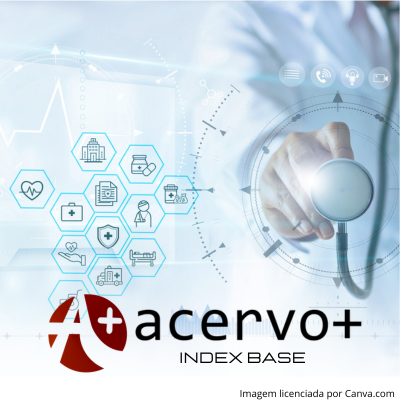Validation of digital technologies in the health care area: integrative review
##plugins.themes.bootstrap3.article.main##
Resumo
Objective: To explore, in different databases, the tools and methodologies used to validate applications implemented in health services. Methods: This is an integrative literature review aimed to identify articles that reveal different methods to validate digital technologies in healthcare. Results: Eight articles met the inclusion and exclusion criteria. Two authors chose to validate the software through a previously validated scale; others used qualitative and quantitative methodologies, with validated scale and individualized interviews; three chose qualitative methodology, from individual interviews to focus group evaluations and, finally, the last article used positive results obtained during the evaluation of the application after launch in health services to validate the software. Some authors have developed quality tools using scales, but the absence of features required by International Standardization Organization (ISO) standards limit the results. Final Considerations: We suggest the creation of a user-friendly and widely available scale or questionnaire based on ISO standards to validate software in health care, facilitating comparison of applications for use in health services.
##plugins.themes.bootstrap3.article.details##
Copyright © | Todos os direitos reservados.
A revista detém os direitos autorais exclusivos de publicação deste artigo nos termos da lei 9610/98.
Reprodução parcial
É livre o uso de partes do texto, figuras e questionário do artigo, sendo obrigatória a citação dos autores e revista.
Reprodução total
É expressamente proibida, devendo ser autorizada pela revista.
Referências
2. BARNETT A, et al. Digital transformation of hospital quality and safety: real-time data for real-time action. Australian Health Review, 2019; 43(6): 656–661.
3. BROOKE J. SUS - A quick and dirty usability scale. Usability evaluation in industry, 1996; 189-194.
4. CARAYON P, et al. Impact of electronic health record technology on the work and workflow of physicians in the intensive care unit. Int J Med Inform, 2015; 84(8): 578–94.
5. CORDEIRO HP, et al. Validação de aplicativo móvel para médicos que atendem pacientes com HIV/AIDS na atenção básica. Revista Eletrônica Acervo Saúde, 2019; 34: e1460.
6. FARIAS AC, et al. EstomatoPEP: Prontuário eletrônico desenvolvido para otimizar a educação em serviço numa clínica escola de odontologia. Rev Nov Tec na Educ., 2019; 17(3): 253-262.
7. GABRIELOVÁ J e VELEMINSKY MS. Interdisciplinary collaboration between medical and non-medical professions in health and social care. Neur Endoc Letters, 2012; 35(1): 59-66.
8. GONG E, et al. Quality, functionality, and features of Chinese mobile apps for diabetes self-management: Systematic search and evaluation of mobile apps. JMIR MHealth and UHealth, 2020; 8(4): 1-13.
9. GUPTE G, et. al. Together We Learn: Analyzing the Interprofessional Internal Medicine Residents’ and Master of Public Health Students’ Quality Improvement Education Experience. American Journal of Medical Quality: The Official Journal of the Amer Coll of Med Quality, 2016; 31(6): 509-519.
10. HERRMANN S, et al. Supporting patient-clinician interaction in chronic HIV care: Design and development of a patient-reported outcomes software application. J of Med Int Res., 2021; 23(7): 1-19.
11. ISO/IEC 25010. System and Software engineering - System and software Quality Requirements and Evaluation (SQuaRE) - System and software quality models. Switzerland, 2011.
12. KAYA A, et al. Usability Measurement of Mobile Applications with System Usability Scale (SUS). Industrial Engine Big Data Era, 2019; 389-400.
13. KEASBERRY J, et al. Going Digital a Narrative Overview of Clinical Impacts of eHealth Tecnologies in Hospital Practice. Aust Health Review, 2017; 41(6): 646-664.
14. LIMA CJM, et al. Development and Validation of a Mobile Application for the Teaching of Electrocardiogram. Rev Bras Educ Médica, 2019; 43(1): 166-174.
15. PEDUZZI M e AGRELI HF. Teamwork and collaborative practice in primary health care. Interface, 2018; 22(2): 1525–1534.
16. SHARMA A, et al. Using Digital Health Technology to Better Generate Evidence and Deliver Evidence-Based Care. J Am Coll Cardiol., 2018; 71(23): 2680-2690.
17. SILVA JE. Aplicativo para classificação de risco da demanda espontânea na atenção básica à saúde. Dissertation of Master’s degree program – Professional Master’s Program in Health Research, Cesmac University Center, 2021.
18. VON-WANGENHEIM A e NUNES DH. Creating a Web Infrastructure for the Support of Clinical Protocols and Clinical Management: An Example in Teledermatology. Telemed and E-Heal, 2019; 25(9): 781-790.
19. WANG W, et al. Developing and testing a mobile application programme to support self-management in patients with stable angina: A feasibility study protocol. Stud in Heal Tec and Inf., 2014; 201: 241-248.
20. WORMER BA, et al. Impact of implementing an eletronic health record on surgical resident work flow, duty hours, and operative experience. Am Surg, 2015; 81(2): 172–177.

